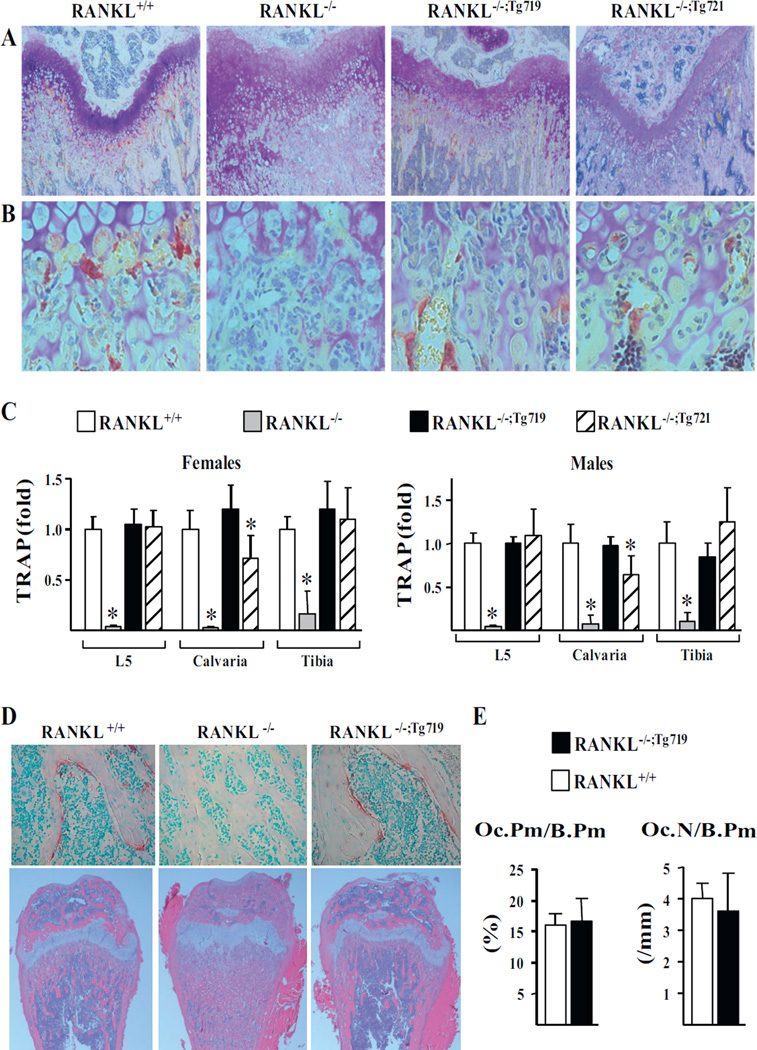Fig. 4.
The mTnfsf11 transgene is capable of rescuing growth plate organization and supporting osteoclastogenesis. (A, B) Femoral sections of 5-week-old male mice of the indicated genotype were stained with TRAP and toluidine blue to examine growth plate organization (A) and osteoclast formation (B). (C) TRAP mRNA levels in L5, calvaria, and tibia of 5-week-old female and male mice of the indicated genotype were measured using quantitative RT-PCR. All values were normalized to beta-actin and represent the mean of 3 to 16 animals per group. (D) TRAP and methyl green–stained (top) and H&E-stained (bottom) femoral sections of 5-week-old male mice. (E) Histomorphometric analyses of Oc.Pm/B.Pm and Oc.N/B.Pm were performed in TRAP-stained and methyl green–stained femoral sections of 5-week-old male mice of the indicated genotype (n = 3 animals/ group). All statistical comparisons of RT-PCR were derived using one-way ANOVA analysis and statistical comparisons of histomorphometric parameters were performed using Student’s t test. * p <0.05 compared to the wild-type group. Oc.Pm/B.Pm = osteoclast perimeter per bone perimeter; Oc.N/B.Pm = osteoclasts number per bone perimeter; H&E = hematoxylin and eosin stain; TRAP = tartrate-resistant acid phosphatase; L5 = lumbar vertebra 5.

